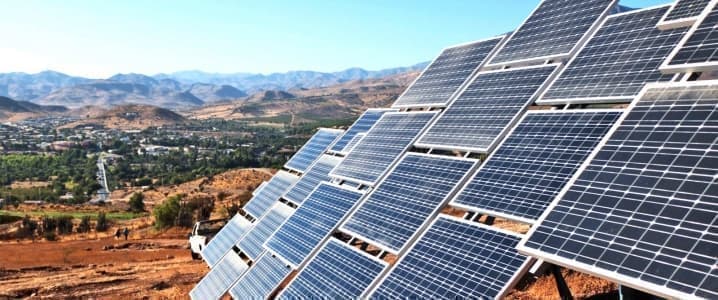In mid-October government officials inaugurated the village of Id Mjahdi, located near the western city of Essaouira.
The first of its kind in Africa, the village, which is capable of housing some 50 people, is completely energy autonomous and is not connected to the national power grid. It is powered by 32 photovoltaic (PV) solar panels, which generate 8.32 KWh of electricity.
In addition to powering street lights and domestic water heaters and ovens, the solar station can run a public hammam, water tower, argan workshop and educational centre.
To ensure power can be used outside of daylight hours the network is fitted with a battery for electricity storage.
Solar at heart of renewables plan
The village’s inauguration comes amid ongoing efforts to increase renewable energy’s contribution to the national energy mix.
Renewables currently make up around 34% of installed capacity. The government aims to increase this figure to 42% next year and 52% by 2030, with a blend of hydroelectricity, solar and wind.
The ambitious targets have their roots in the National Energy Strategy, launched in 2009, which provided a regulatory framework for the development of renewable energy sources and helped pave the way for the establishment of large-scale projects.
One of the most significant developments has been the construction of the 580-MW Noor concentrated solar power (CSP) plant, the first stage of which was inaugurated in 2016.
Located close to the town of Ouarzazate, known as the gateway to the Sahara, it is the largest CSP facility in the world, covering 3000 ha.
This was followed in May this year by the announcement that a consortium consisting of French company EDF, Emirati firm Masdar and local company Green of Africa had been awarded the rights to construct the first phase of the Dh7.6bn ($788.6m) Noor Midelt project.
Located near the town of Midelt in the north-east, once fully completed the two-phase, hybrid thermosolar and PV plant will produce 800 MW of energy with a storage capacity of five hours.
Preliminary infrastructure, including a 40-km road and a 50-km electric cable, has been installed, and construction work is expected to begin before the end of the year. Related: JP Morgan Raises 2020 Oil Price Outlook
While wind and hydropower projects also form part of the renewables strategy, the emphasis on solar aims to take advantage of Morocco’s natural resources. Government estimates suggest that the country has around 3000 hours of sunlight per year, with solar energy potential of 5 KWh per sq metre per day.
Economic impact of renewables
The investment in and expansion of renewable energy is also expected to generate significant economic benefits.
At present, Morocco imports around 90% of its energy needs, with its energy import bill rising 18% last year to total Dh82.3bn ($8.5bn).
With national energy consumption increasing by an estimated 3-5% annually, the expansion of renewable capacity will meet a significant slice of demand and hence reduce the need for imports.
In addition to renewables, the country is also looking to expand its upstream production as part of efforts to reduce energy dependency.
Total investment in oil and gas is expected to be Dh1.7bn ($176.4m) this year, according to government figures, up from the Dh1.4bn ($145.3m) spent in 2018. Year-end production is expected to reach 96m cu metres of natural gas and 4300 tonnes of condensate.
Further, in a boost to downstream capacity in late October the government signed a $2.2bn deal that will see Russian state development bank VEB construct an oil refinery in the country.
The refinery, to be located in the north, will have an initial capacity of 100,000 barrels per day, which is expected to increase to 200,000 upon completion. This will mark the resumption of refining activity in the country: Morocco’s only refinery, Samir, shut down in 2015.
More Top Reads From Oilprice.com:
- Oil Prices Head Higher Despite OPEC+ Skepticism
- IEA: An Oil Glut Is Inevitable In 2020
- US Proved Oil & Gas Reserves Hit New Record High


















